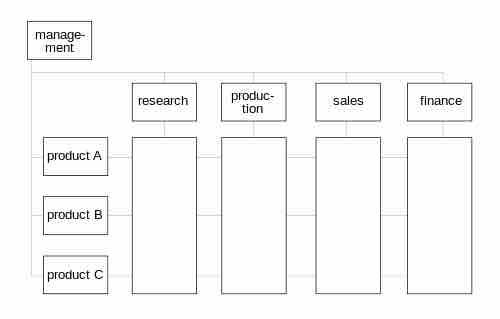Organizing: An Overview
Once a plan has been created, a manager can begin to organize.
Organizing, in a company's point of view, is the management function that usually follows planning. It involves the assignment of tasks, the grouping of tasks into departments, and the assignment of authority and allocation of resources across the organization. During the organizing process, managers co-coordinate employees, resources, policies and procedures to facilitate the goals set out in the plan.
Organizing is highly complex and can involve:
- Human resources
- Finance
- The establishment of priorities
The synchronization of all of these elements is important if results are to be obtained.
The Nature of Organization
The following are the important characteristics of organization.
Specialization and Division of Work
- The entire philosophy of organization is centered on the concepts of specialization and division of work.
- The division of work is assigning responsibility for each organizational component to a specific individual or group thereof. It becomes specialization when the responsibility for a specific task lies with a designated expert in that field.
- The efforts of the operatives are coordinated to allow the process at hand to function correctly. Certain operatives occupy positions of management at various points in the process to ensure coordination.
Orientation Towards Goals
Every organization has its own purposes and objectives. Organizing is the function employed to achieve the overall goals of the organization. Organization harmonizes the individual goals of the employees with overall objectives of the firm.
Composition of individuals and groups
- Individuals form a group and the groups form an organization. Thus, organization is the composition of individual and groups.
- Individuals are grouped into departments and their work is coordinated and directed towards organizational goals.
Differentiated functions
- The organization divides the entire work and assigns the tasks to individuals in order to achieve the organizational objectives; each one has to perform a different task and tasks of one individual must be coordinated with the tasks of others. Collecting these tasks at the final stage is called integration.
Continuity
- An organization is a group of people with a defined relationship in which they work together to achieve the goals of that organization. This relationship does not come to end after completing each task. Organization is a never ending process.
Benefits of Organization
Together, these characteristics:
Help to achieve organizational goals
- Organization is employed to achieve the overall objectives of business firms. Organization focuses attention of individuals objectives towards overall objectives.
Optimise the use of resources
- To make optimum use of resources such as men, material, money, machine and method, it is necessary to design an organization properly.
- Work should be divided and right people should be given right jobs to reduce the wastage of resources in an organization.
Aid managers in performing other managerial functions
- Additional planning, organizing, staffing, directing and controlling cannot be implemented without proper organization.
Facilitate growth and diversification
- A good organization structure is essential for expanding business activity. Organization structure determines the input resources needed for expansion of a business activity similarly organization is essential for product diversification such as establishing a new product line.
Facilitate human treatment of employees
- Organization has to operate for the betterment of employees and must not encourage monotony of work due to higher degree of specialization.
- These days, organization has adapted the modern concept of systems approach based on human relations and it discards the traditional productivity and specialization approach.
Organizational Design: Helping Managers Organize
Organization design can be defined narrowly, as the process of reshaping organization structure and roles, or it can more effectively be defined as the alignment of structure, process, rewards, metrics and talent with the strategy of the business.

Organizational Design
This is one type of matrix organizational structure.
Organization design may involve strategic decisions, but is properly viewed as a path to effective strategy execution. The design process nearly always entails making trade-offs of one set of structural benefits against another.
Many companies fall into the trap of making repeated changes in organization structure, with little benefit to the business. This often occurs because changes in structure are relatively easy to execute while creating the impression that something substantial is happening. This often leads to cynicism and confusion within the organization.
More powerful change happens when there are clear design objectives driven by a new business strategy or forces in the market that require a different approach to organizing resources.